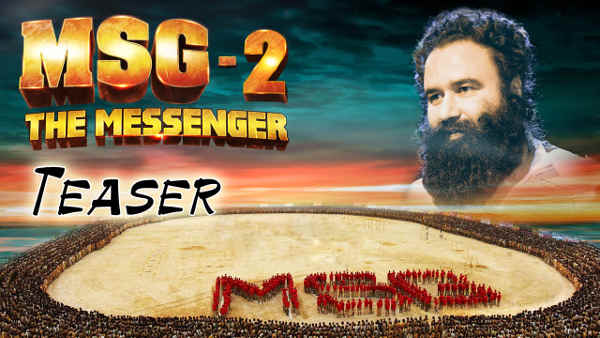By a detailed judgment dated 16 September 2015, Delhi high court has rejected a writ petition vide W.P. (C) No. 8883 of 2015 filed by Prem Mardi, who is an Advocate belonging to the Scheduled Tribe (ST) community, seeking a ban on the screening of the film “MSG-2 The Messenger” (directed by Saint Gurmeet Ram Rahim Singh of Dera Sacha Sauda, and Jeetu Arora) by seeking the reliefs of (i) quashing of the Certificate issued by the Central Board of Film Certification (CBFC) to the said film; (ii) by seeking a direction to Ministry of Home Affairs, Government of India (GOI) to issue appropriate orders to “YouTube” to take down the trailer of the said film from its website; (iii) by seeking a direction to Ministry of Information and Broadcasting, GOI to issue appropriate orders to cable and television networks proscribing them from broadcasting the said film or its trailer; and, (iv) by restraining Hakikat Entertainment Pvt. Ltd., the producer of the said film, from circulating, distributing, exhibiting, sharing the said film or its trailer in any manner whatsoever.
 The decision of the high court was delivered by Justice Rajiv Sahai Endlaw.
The decision of the high court was delivered by Justice Rajiv Sahai Endlaw.
The main grounds on which the said petition was filed are as under:
- The petitioner belongs to the Santhal Scheduled Tribe of Jharkhand.
- The official trailer of the film discloses the protagonist of the said film to be “fighting against the wild & primitive lifestyle of tribals and succeeding in turning them into civilized human beings”.
- The official trailer begins by stating that the film is based on true events and refers to “Adivasis” as having been declared terrorists by the Government and further states that Adivasis are neither humans nor animals but “Shaitaans” who have to be converted into “Insaans”.
- In the trailer, the protagonist Saint Gurmeet Ram Rahim Singh Ji Insan is shown as a masiha who has undertaken the task of civilizing the Adivasis by using violence against the Adivasis.
- The trailer of the subject film is also being repeatedly shown on television on various channels as a promotion / advertisement.
- The subject film has been granted “U/A” certification by the CBFC and that the grant of certificate to the subject film is bad in law.
The Petition also referred to the Guidelines for Certification of Films for Public Exhibition issued on 6th December, 1991 by the Government of India in exercise of powers conferred by Section 5B(2) of the Cinematograph Act, 1952 inter alia requiring CBFC to ensure that:
(a) pointless or avoidable scenes of violence, cruelty and horror, scenes of violence primarily intended to provide entertainment and such scenes as may have the effect of de-sensitising or dehumanising people are not shown;
(b) human sensibilities are not offended by vulgarity, obscenity or depravity;
(c) such dual meaning words as obviously cater to baser instincts are not allowed; and,
(d) visuals or words contemptuous of racial, religious or other groups are not presented and visuals or words which promote communal, obscurantist, anti-scientific and anti-national attitude are not presented.
However, the Delhi high court rejected the contentions of the petitioner by holding that his entire case is premised on the use in the film of the word “adivasi”. The petitioner assumes the adivasis to be meaning tribals or more particularly the scheduled tribals and thus finds the film de-sensitive of the tribals and more particularly scheduled tribals and promoting hatred against the tribals and scheduled tribals.
The court held that “adivasi” connotes aboriginal people and not people falling in the definition of scheduled castes and scheduled tribes in Articles 341 and 342 of the Constitution of India.
The court further observed that even the Constitution of India in Hindi does not use the word “adivasi” in Articles 341, 342 and 366 in place of the word “tribe”. The word used for the word tribe therein is “janjati”. It was thus observed that the term “adivasi” is not indicative of tribes or scheduled tribes but is indicative of the earliest inhabitants of any land whether it be in India or anywhere else in the world.
It was further held that the film is a work of fiction intended to show its protagonist who in his real life form also proclaims to be a spiritual leader, in a superhuman form.
The court felt that only such films can be said to be having propensity of inculcating hatred, ill-will and violence towards a person or group of persons which show life as is ordinarily understood by the viewers and not a film which, to the average viewers understanding, is not depicting life but a fantasy or what is surreal. It was also noted that the subject film from the trailer is found to be depicting a fantasy to the viewers and has to be understood in the said light only. In fact, in some scenes in the trailer, the adivasis are shown with two horns and having the lower body as of an animal and the upper torso of a human being. The reference in the film to adivasis is not found to be relatable in any manner to scheduled tribes.
In view of these reasons, the high court dismissed the petition and refused to ban the movie “MSG 2 – The Messenger”.
The full judgment of the Delhi High Court can seen here.

